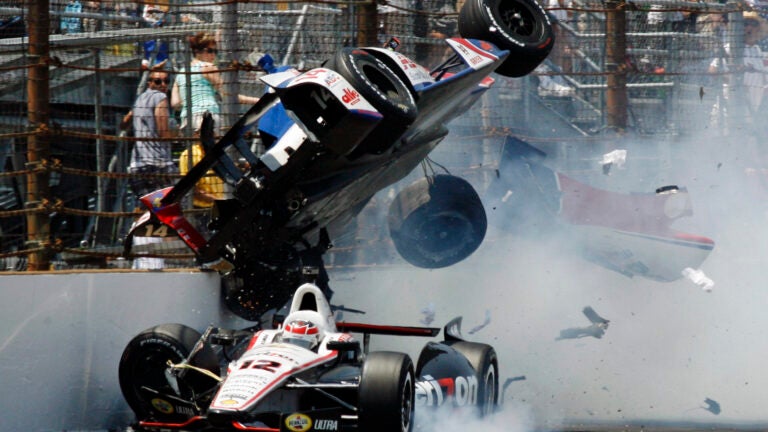Breaking News: The Worst Crashes of the Century – A Look Back at Formula 1’s Most Terrifying Moments
 In the high-octane world of Formula 1, danger lurks at every turn, and the 21st century has seen some of the most catastrophic crashes in motorsport history. From horrifying wrecks to miraculous escapes, these incidents have forever changed the landscape of racing safety.
In the high-octane world of Formula 1, danger lurks at every turn, and the 21st century has seen some of the most catastrophic crashes in motorsport history. From horrifying wrecks to miraculous escapes, these incidents have forever changed the landscape of racing safety.
One of the most shocking moments occurred during the 2022 British Grand Prix when Guanyu Zhou’s car flipped upside down, wedging between a fence and tire barriers. The scene was harrowing as fellow drivers rushed to assist, highlighting the intense camaraderie and concern among competitors. Zhou was quickly extracted and, against all odds, emerged unscathed, a testament to the safety advancements made in the sport.
But not all stories ended as positively. The legacy of Luciano Burti’s crash at Spa in 2001 is a grim reminder of the sport’s perilous nature. Burti collided with a wall at nearly 170 mph, suffering severe injuries, including a brain hemorrhage. His accident prompted crucial changes in safety protocols, including the introduction of tire barrier blankets to prevent cars from sinking beneath them.

Felipe Massa’s near-fatal incident at the 2009 Hungarian Grand Prix raised alarms about head protection. A piece of debris struck Massa’s helmet, resulting in a skull fracture and a lengthy recovery. His crash not only sidelined him for the season but also led to the development of improved safety measures, including the Halo device, which would later save lives.
The 2014 Japanese Grand Prix took a tragic turn when Jules Bianchi’s car collided with a recovery vehicle in treacherous conditions, resulting in a fatal head injury. This heartbreaking event underscored the urgent need for stricter safety protocols, leading to sweeping changes in how races are conducted during adverse weather conditions.
In 2018, two horrifying crashes tested the limits of safety innovations. Fernando Alonso narrowly escaped a life-threatening incident when his car soared over another vehicle, while Marcus Ericsson’s terrifying flip at Monza showcased the resilience of modern F1 safety features, as he walked away from a wreck that could have easily been fatal.

Perhaps the most dramatic incident in recent memory was Romain Grosjean’s fiery crash at the 2020 Bahrain Grand Prix. His car split in half and burst into flames, yet Grosjean miraculously emerged alive after 27 seconds trapped in the inferno. This extraordinary escape demonstrated the effectiveness of safety advancements, including the Halo and fire-resistant gear.
As we reflect on these harrowing moments, it’s clear that while Formula 1 has made significant strides in safety, the sport remains inherently dangerous. Each crash serves as a stark reminder of the risks drivers face and the ongoing need for vigilance in safety measures. The legacy of these incidents continues to influence the sport, driving innovations that aim to protect the athletes who dare to push the limits of speed and skill.
Stay tuned for more updates as we continue to honor the bravery of those who race and the lessons learned from these unforgettable crashes.




